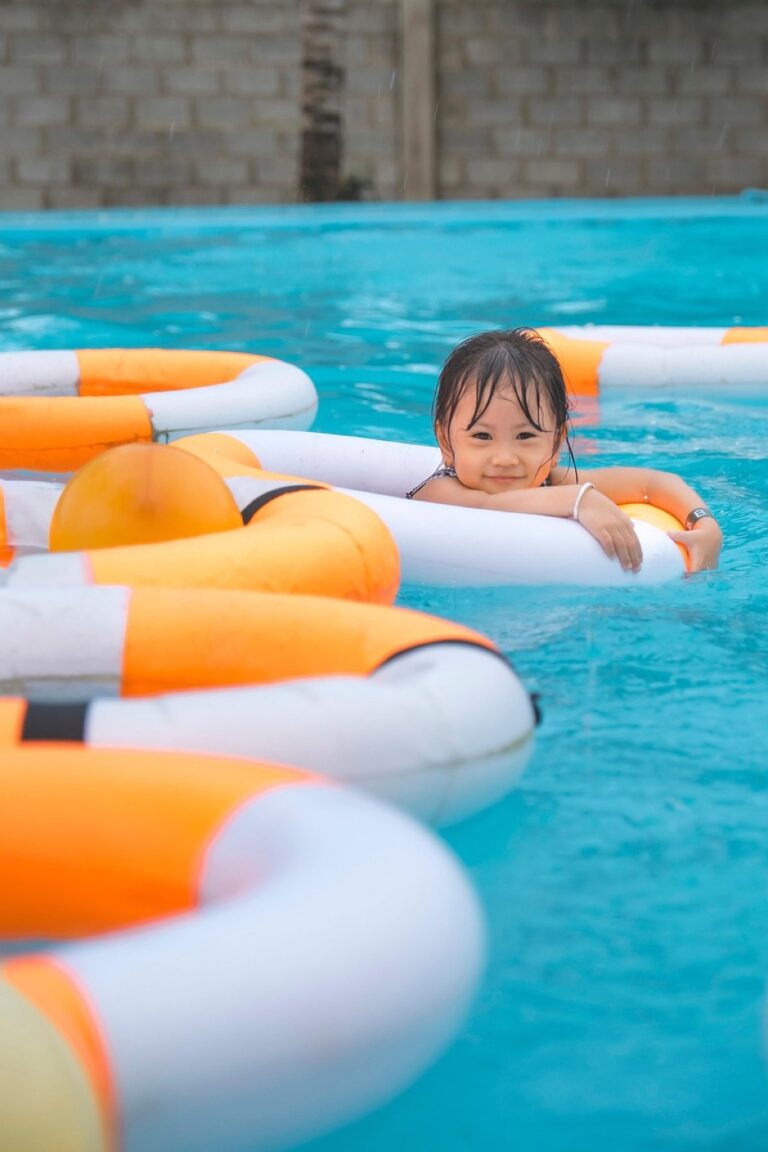7 Strategies for Poolside Crowd Control That Ensure Summer Safety
Discover 7 essential strategies for managing pool crowds this summer, from capacity limits to trained staff, ensuring safety and enjoyment for all swimmers.
Managing crowds around your pool isn’t just about safety—it’s essential for ensuring everyone enjoys their time in the water without chaos or accidents. Summer heat brings swimmers in droves, and without proper crowd control strategies, your poolside area can quickly transform from relaxing oasis to stressful nightmare.
The reality: overcrowded pools lead to safety hazards, reduced enjoyment, and potential liability issues for property managers and homeowners alike. Implementing effective crowd management tactics helps maintain order while still allowing guests to make the most of their swimming experience.
Disclosure: As an Amazon Associate, this site earns from qualifying purchases. Thank you!
1. Implementing Clear Signage and Communication
Using Visual Cues for Pool Rules
Effective signage is your first line of defense against poolside chaos. Position large, weather-resistant signs at eye level around key entry points displaying capacity limits, age restrictions, and safety rules. Use universal symbols alongside text to overcome language barriers, and incorporate color-coding to highlight critical information like depth markers and no-diving zones. Consider adding floor decals to reinforce traffic patterns and waiting areas.
Establishing Regular Announcements
Schedule consistent announcements throughout peak hours to remind guests of important rules and upcoming activities. Train staff to use a friendly but authoritative tone when delivering messages about safety protocols, swim session rotations, and capacity updates. Implement a tiered announcement system—utilizing a microphone for important safety alerts and casual verbal reminders for minor issues. Digital message boards can supplement verbal communications during noisy periods.
2. Creating Designated Swimming Zones
Creating designated swimming zones is one of the most effective strategies for managing pool crowds and enhancing safety.
Separating Areas by Age and Skill Level
Divide your pool into clearly marked sections based on swimmer abilities and activities. Designate shallow areas for young children and non-swimmers, intermediate zones for recreational swimmers, and deep sections for advanced swimmers. This organization prevents accidents between different skill levels and helps lifeguards monitor specific areas more effectively. Parents will appreciate knowing exactly where their children can swim safely.
Using Physical Barriers for Zone Separation
Install floating lane dividers, ropes with buoys, or modular pool separators to create distinct boundaries between zones. These physical barriers prevent unintentional zone crossing while allowing lifeguards to maintain visual oversight across sections. For permanent solutions, consider colored tiles or markings on the pool floor that visually reinforce zone boundaries even when temporary barriers are removed during off-peak hours.
3. Scheduling Staggered Entry Times
Implementing staggered entry times is a powerful strategy to prevent overcrowding and maintain a comfortable pool environment for all guests. This approach distributes attendance throughout the day, reducing peak congestion and enhancing everyone’s experience.
Managing Peak Hours With Time Slots
Time slots transform chaotic peak hours into manageable waves of swimmers. Divide your pool day into 2-3 hour blocks, assigning specific entry times to different user groups like families, lap swimmers, or adult-only sessions. Post a clear schedule at the entrance and online so guests can plan accordingly. This system prevents the typical noon rush and creates a more predictable flow of visitors throughout the day.
Using Digital Reservation Systems
Digital reservation platforms streamline the entry process while preventing unexpected crowds. Implement a user-friendly app or website where guests can book their swim times in advance, receive automatic confirmations, and get reminder notifications. Many systems offer customizable features like capacity tracking, QR code check-ins, and analytics to help identify usage patterns. These tools eliminate the frustration of arriving to find the pool at capacity.
4. Training and Positioning Lifeguards Strategically
Properly trained and strategically positioned lifeguards form the backbone of effective poolside crowd control. When lifeguards know exactly where to be and what to watch for, they can prevent dangerous situations before they develop.
Optimal Lifeguard-to-Swimmer Ratios
Maintaining the right lifeguard-to-swimmer ratio is crucial for pool safety. The American Lifeguard Association recommends one lifeguard for every 25 swimmers in standard pools, and one per 50 in shallow water. During peak times, increase your guard presence to accommodate higher traffic and maintain vigilant supervision across all zones.
Rotating Guard Stations for Maximum Coverage
Implement a 20-30 minute rotation system for lifeguards to prevent fatigue and maintain alertness. Position guards at elevated stations for better sightlines across crowded areas. Create a rotation schedule that ensures continuous coverage of high-risk zones like deep ends and water features while preventing vigilance degradation that naturally occurs after extended observation periods.
5. Enforcing Capacity Limits Consistently
Calculating Safe Occupancy Numbers
Calculating your pool’s safe occupancy limit requires more than guesswork. Start with the industry standard of 15-25 square feet of water surface per swimmer, adjusting based on pool depth and intended activities. Shallow play areas need about 15 square feet per person, while lap swimming requires at least 25 square feet. Document these calculations and post them prominently to justify your limits when challenged by eager swimmers.
Methods for Counting and Tracking Attendance
Implement practical tracking systems to maintain your established capacity limits. Wristband systems allow for visual confirmation of authorized swimmers, while digital check-in kiosks provide real-time occupancy data. Consider using color-coded wristbands that rotate daily to prevent sharing or reuse. Many pool facilities now employ simple counter apps on tablets that staff can use to monitor entries and exits throughout the day.
6. Organizing Structured Activities
Programming that Distributes Crowds Evenly
Structured pool activities strategically scheduled throughout the day effectively distribute crowds and prevent congestion. Implement a rotating schedule of water aerobics, swim lessons, and family games that appeal to different age groups. Space these activities 30-60 minutes apart in various pool zones to naturally regulate traffic flow. Digital activity boards allow guests to plan their day around preferred events while distributing attendance more evenly across operating hours.
Creating Alternative Attraction Points
Develop engaging attraction points beyond the main pool to reduce concentrated crowding. Set up splash pads, water volleyball courts, or poolside craft stations that draw visitors to underutilized areas. Position comfortable lounge zones with shade structures and refreshment stations at opposite ends of your facility. These strategically placed alternatives can reduce main pool occupancy by 15-20% during peak hours while enhancing the overall guest experience.
7. Establishing Weather-Related Protocols
Implementing these seven poolside crowd control strategies will transform your aquatic space from chaotic to comfortable. By setting capacity limits calculating proper space per swimmer and enforcing them consistently you’ll create a safer environment for everyone.
Strategic scheduling with time blocks and digital reservations prevents overwhelming crowds while trained lifeguards positioned optimally ensure maximum safety coverage. Don’t forget that physical design elements like designated zones and traffic patterns dramatically reduce congestion.
Remember that effective poolside management isn’t about restricting fun—it’s about enhancing the experience for all guests. When everyone has adequate space proper supervision and clear expectations your pool becomes a place where memories are made rather than incidents managed. Your guests will appreciate the organization and you’ll enjoy peace of mind knowing you’ve created the safest possible swimming environment.
Frequently Asked Questions
Why is crowd management important for swimming pools?
Crowd management at pools is crucial for safety and enjoyment. Overcrowding creates hazards like limited visibility for lifeguards, increased risk of accidents, and difficulty responding to emergencies. It also diminishes the experience for guests and can create liability issues for property owners. Effective crowd control ensures everyone can enjoy the pool safely.
What is a safe capacity limit for swimming pools?
A safe capacity limit typically ranges from 15-25 square feet of water surface per swimmer. Deeper pools require more space (20-25 sq ft per person) while shallow areas can accommodate more people (15-20 sq ft per person). This standard helps prevent overcrowding while ensuring swimmers have enough room to move safely.
How can pool zones improve safety?
Designated swimming zones improve safety by separating activities based on skill level and purpose. Creating specific areas for children, lap swimmers, and recreational swimmers prevents conflicts and accidents. Physical barriers like lane dividers reinforce these zones, reducing the risk of collisions and making it easier for lifeguards to monitor different activities.
What’s the recommended lifeguard-to-swimmer ratio?
The recommended ratio is one lifeguard for every 25 swimmers in standard pools and one per 50 swimmers in shallow water areas. During peak times, this ratio should be increased. Lifeguards should rotate positions regularly to prevent fatigue and maintain alertness, with strategic positioning at elevated stations for maximum visibility.
How can time blocks help manage pool crowds?
Scheduling time blocks distributes crowd density throughout the day by assigning specific periods for different activities or user groups. For example, morning hours for lap swimming, midday for families, and evenings for adult swim. This prevents all users from attempting to use the pool simultaneously, reducing congestion and improving the experience.
What are effective methods for tracking pool attendance?
Effective tracking methods include wristband systems for visual confirmation, digital check-in kiosks for real-time data collection, manual counters at entry points, and mobile apps that log entries and exits. Color-coded wristbands can help identify different time slots or user groups, while digital systems can automatically alert staff when approaching capacity limits.
How can activities help with crowd distribution?
Structured activities like water aerobics, swim lessons, and family games scheduled throughout the day help regulate traffic flow and prevent bottlenecks. Additionally, creating alternative attraction points such as splash pads, game areas, or craft stations draws visitors away from the main pool, reducing peak occupancy while enhancing the overall guest experience.
What role does signage play in pool crowd management?
Clear signage is essential for communicating rules, capacity limits, and safety information. Large, weather-resistant signs with universal symbols and color-coding improve comprehension across language barriers. Strategically placed signs at entrances, around the pool, and near high-risk areas help guide behavior and prevent misunderstandings that could lead to safety issues.






